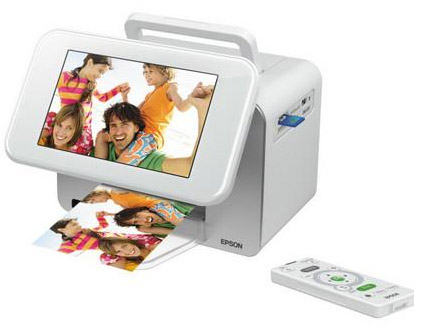In the digital era, most people tend to store their pictures in online photo albums rather than have physical copies printed. This method might be convenient, but you have to admit that some of the magic of photographs is lost when everything stays exclusively online, locked behind a screen. What about the iconic coffee table photo album? Or a scrapbook for a cherished friend? How might you share photographs with friends and family who simply don’t go online?
There will come a time when you’ll want to print a photo, and you’ll soon discover that regular printer paper just doesn’t have the same effect. You’ll also notice that the colors in your photo are faded and dull. What gives??
Fear not! You’re simply lacking a few basic tools to produce the stunning, high-quality prints that you were once used to collecting from professional developers.
Do You Need a Special Photo Printer?
If you have a high volume of photos to print and/or your project requires the absolute best in quality, it’s probably a good idea to consider investing in a specialized professional-grade photo printer.
These printers are known as dye-sublimation printers and, as you might have guessed, do only one thing: print photos. This means you’ll need a separate “regular” printer for your documents. But the unique heat-transfer method of a dye-sublimation printer means that your photos will come out sharp and clear.
High quality prints mean high resolution, so for photographs that are the best-of-the-best, look for a printer that will offer you 4,800 x 1,200 dpi or higher. Be prepared to spend extra money for extra quality, of course.
However, if you only print photos occasionally, you might as well save your money and simply use your regular trusty inkjet printer (provided it prints in color). The key is to use photo paper instead of regular paper. All printer trays should be able to accept varying sizes of paper, meaning you can print on 4 X 6 inch photo paper if you so wish. But the printer won’t automatically know that you’ve loaded the tray with a smaller size of paper, so don’t forget to adjust the settings in the prompt box before clicking “Print.”
Choosing Photo Paper
There are several factors to consider when looking for the perfect photo paper for your project: the paper’s size, weight and finish, as well as the type of printer in which the paper will be used.
As far as size, a good standby is the standard 4 X 6 inch option, but you can also get slightly larger 5 X 7 inch paper. If your printer tray can accommodate paper larger than that of the standard document size of 8.5 X 11 inches (a size that is also available as photo paper), you can find 11 X 17 inch and 13 X 19 inch paper.
The weight of the photo paper is also important. Heavier weights produce higher quality photographs. It’s a good idea to choose heavier papers for photos you plan to frame or to keep indefinitely. Lighter weights may be more suitable for mailing off to family and friends, as a lower weight also means less postage.
Next, the paper’s gloss is important to consider based on what you intend to do with the photograph. If you intend to frame the photo, a matte finish is recommended in order to avoid a glare. You may want to use the traditional glossy finish—which will provide a smooth, uniform finish with excellent contrast—for your photo albums. Note that matte papers will absorb more ink than glossy papers, so it’s wise to do a smaller test print to ensure that this factor will not affect the quality of the photo. And last but not least, for a more artistic touch, you can choose from a variety of other finishes, including satin, luster and soft gloss.
Finally, you’ll need to use a different paper in inkjet printers versus laser printers. Laser printers work by literally melting the pigment onto the paper, and this high temperature has to be accommodated by the photo paper. Using photo paper designed for the high temperature of a laser printer in an inkjet printer (or inkjet paper in a laser printer) could result in smearing or even damage the machine.
Also note that inkjet printers use either pigment or dye-based inks, and each of these needs a particular type of photo paper. Know which type of ink your printer uses before you purchase photo paper.
At first glance it might seem like printed photos are a thing of the past, but that simply isn’t true. By knowing your machine and keeping a few supplies on hand, you can easily print your favorite photographs from the comfort of your own home.


